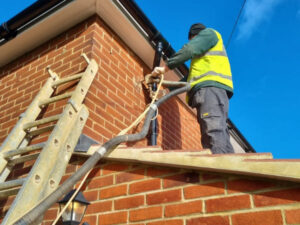In today’s world, energy efficiency is more important than ever. One crucial tool in assessing and improving your home’s energy performance is the Energy Performance Certificate (EPC). Understanding the process of getting an EPC, what it entails, and how to utilize its advice can help you make your home more energy-efficient. This guide will walk you through everything you need to know about EPCs.
What is an EPC?
An Energy Performance Certificate, or EPC, is a document that provides an assessment of a property’s energy efficiency. It includes a rating from A (most efficient) to G (least efficient). The EPC also offers recommendations for improving the property’s energy performance. EPCs are required when a property is built, sold, or rented. They help potential buyers, tenants, and owners understand the energy efficiency of a home, making informed decisions easier. The certificate not only indicates current energy usage but also provides suggestions on how to enhance efficiency, potentially reducing energy bills and environmental impact.
Why Do You Need an EPC?
An EPC is essential for several reasons. First, it is a legal requirement for selling or renting a property in many regions. Without a valid EPC, you might face fines or delays in your property transactions. Second, it offers a clear picture of your home’s energy efficiency, which can affect property value. Homes with better energy ratings are often more attractive to buyers and tenants. Lastly, the EPC provides actionable advice on how to improve your home’s energy performance, helping you save on energy costs and contribute to environmental sustainability.
What Information Does an EPC Include?
An EPC contains various pieces of important information. The most prominent feature is the energy efficiency rating, displayed on a color-coded scale from A to G. The certificate also details the estimated energy costs for heating, lighting, and hot water, and suggests potential savings if recommended improvements are made. Additionally, it includes a summary of the property’s energy performance-related features, such as wall insulation, double glazing, and heating systems. The EPC further provides recommendations on how to enhance energy efficiency, complete with estimated costs and the potential impact on the property’s energy rating.
The EPC Assessment Process
Getting an EPC involves a straightforward process. First, you need to find a certified domestic energy assessor. You can search online or ask for recommendations from real estate agents or local authorities. Once you’ve selected an assessor, schedule an appointment for the assessment. During the visit, the assessor will conduct a thorough inspection of your property, examining elements like insulation, heating systems, windows, and more. This inspection typically takes around an hour. After the assessment, the assessor will compile the findings and produce the EPC. You will receive the certificate, which you can then use as needed for property transactions or personal reference.
How to Understand the Advice on an EPC
Understanding the recommendations on your EPC is crucial for making effective energy efficiency improvements. The advice is typically divided into cost-effective measures and more significant investments. Cost-effective measures might include installing energy-saving light bulbs or draught-proofing windows and doors. More substantial recommendations could involve upgrading insulation, installing a new boiler, or fitting double-glazed windows. Each suggestion comes with an estimated cost and the expected impact on your energy rating. Prioritize improvements based on your budget and the potential energy savings to make your home more efficient and reduce your energy bills.
Tips for Improving Your Home’s Energy Efficiency
Improving your home’s energy efficiency doesn’t have to be overwhelming. Start with simple, cost-effective measures that can make an immediate difference. For instance, replacing old light bulbs with LED ones, sealing gaps around windows and doors, and installing a programmable thermostat can significantly cut down on energy use.
For more substantial improvements, consider upgrading your insulation, particularly in the attic and walls, as this can greatly reduce heat loss. Replacing single-glazed windows with double or triple glazing can also improve thermal efficiency. If your heating system is outdated, investing in a more efficient boiler or installing a heat pump can lead to significant energy savings.
Renewable energy solutions, such as solar panels or a solar water heating system, are excellent long-term investments. They not only reduce your energy bills but also lower your carbon footprint. Many of these improvements may qualify for government grants or incentives, which can offset initial costs.
Regular maintenance of your heating and cooling systems is essential. Ensure your boiler is serviced annually and check for any inefficiencies. Use smart home technologies to monitor and control energy usage effectively.
Lastly, educate yourself on energy-efficient habits. Simple actions like turning off lights when not in use, using energy-efficient appliances, and reducing water heating temperatures can collectively make a big difference.




